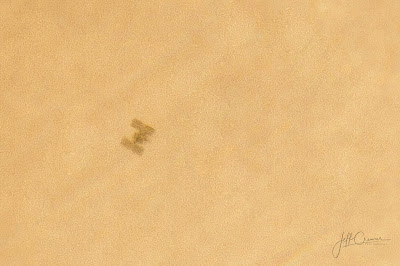A Quick Comparison Between Film and Digital Technology In Astrophotography
TTechnology has advanced a ton in the past 15 years. The picture on the bottom is of the Orion Nebula. I took it when I first started to get into astrophotography around 2002. The picture on top is the most recent picture of the Orion nebula that I took last night.
I bought a super old 400mm Olympus lens from Ebay and mounted it on top of my telescope with an Olympus OM-1 *FILM* camera. I also used one of the first autoguiders on the market to guide the telescope while the picture was being taken.
Something interesting (I think its interesting) that not a lot of people know about is something called "reciprocity failure in film." What that means is that film looses its sensitivity to light after 1 second. There is a very sharp drop off in the films ability to expose after 1 second. This means that if you want to take an astrophoto you need to have a very long exposure time due to the problems that film has. This reciprocity failure isn't present in digital sensors and results in shorter exposure times and saves lots of headaches.
If you take a look at the images you can see the difference in color between the film and digital cameras. Back in the day Kodak film was known for having saturated reds and Fuji film was known for having saturated blue and greens. There was a saying that the color saturation of the film was the same as the color of the box. Kodak had a kinda yellow box and Fuji had a blue/green box.
You can also see the differences in detail that the digital sensor brought out. I believe that I used ISO200 speed film to take the picture on the left. You can see how it didn't pick up the fine detail and wisps of nebulosity like the digital sensor did on the right. You can also see that it didn't pick up the faint blue color of the "running man" nebula that is located slightly above the main nebula.
It was also interesting to see how quickly I could get everything set up and start taking photos with modern gear. I used the cameras live view to get perfect focus on the stars and used the cameras mirror lockup function to reduce mirror slap caused by cameras mirror lifting to expose the sensor. I was also able to take TONS of photos and make corrections after each shot to get a good photo.
Technology is so cool 




Comments
Post a Comment